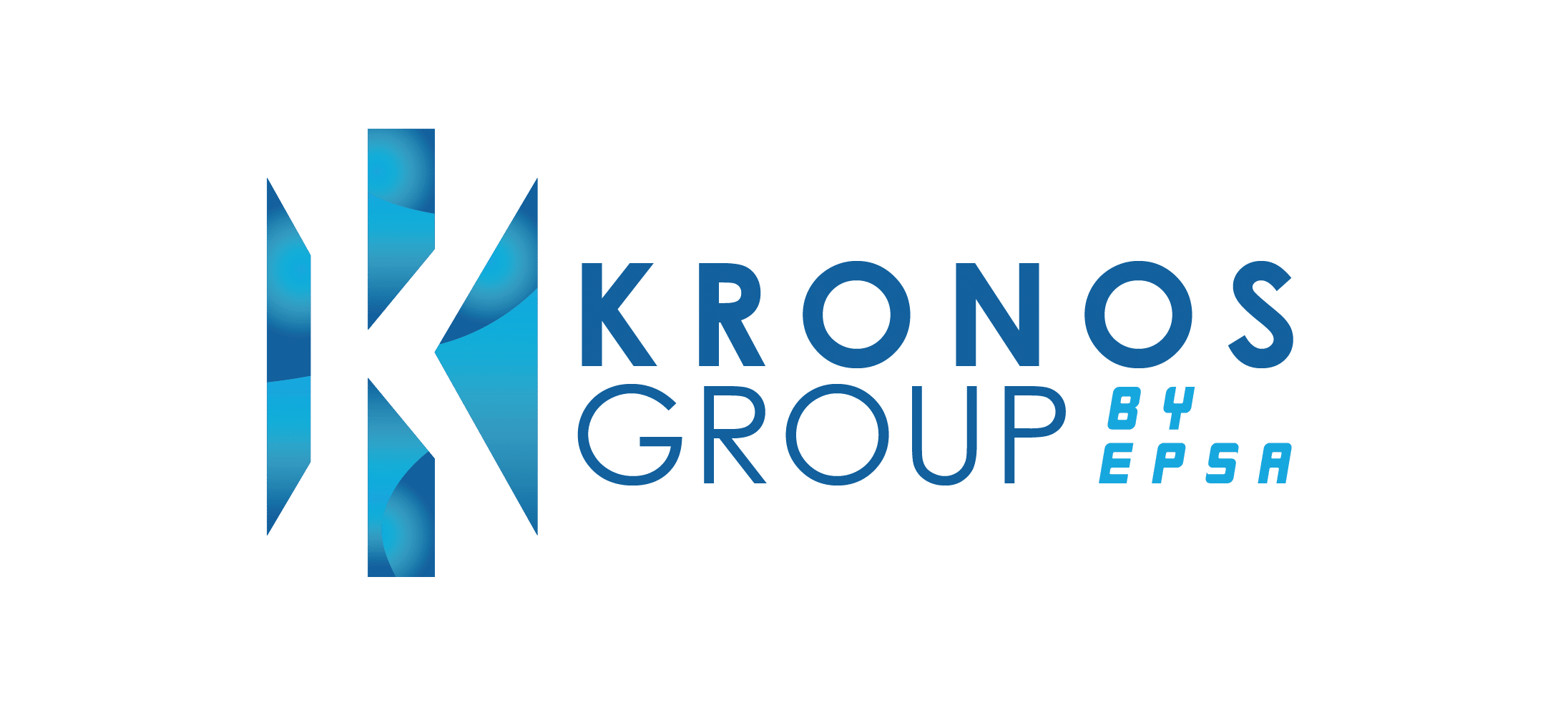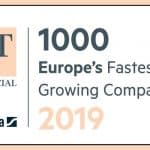How combining automation with human expertise can mitigate risks in the procurement process

Summary
Do technology and human skills complement each other to mitigate risks in the procurement process? Yes, they do, as modern procurement faces various risks, including supply chain disruptions and compliance issues. The risks in modern procurement processes can significantly impact businesses, leading to financial losses and reputational damage. The impact of risks in the procurement process for businesses can be severe, affecting operational efficiency and stakeholder trust. What is the role of automation in mitigating risks in the procurement process? Automation enhances efficiency and consistency, while the critical role of human expertise lies in providing insights for effective decision-making. How to combine automation with human expertise to build a resilient procurement process? By strategically integrating both, organisations can create a robust system that minimises risks and ensures sustainable success.
Did you know that 43% of businesses are highly concerned about how supply chain risks could impact their growth? Yet, despite the importance, 75% of organisations struggle to keep up with improving their risk management practices. Procurement is where risks can arise from multiple angles, including supplier reliability, financial exposure, and compliance challenges.
So how can businesses protect themselves from these risks and ensure stability? Each of these risks can disrupt business operations and negatively impact profitability. Identifying areas of vulnerability is essential for mitigating future challenges. Technology and human skills can complement each other to mitigate procurement-based risks.
Procurement teams have a range of technologies at their disposal, from data analytics platforms to automation tools. These innovations are essential for streamlining operations and improving risk management, but technology alone isn’t enough. To build a resilient procurement system, businesses need to strike the right balance between automation and human expertise.
Do technology and human skills complement each other to mitigate risks in the procurement process?
Technology is essential in reducing procurement risks through a variety of tools and innovations. Data analytics offers critical insights into supplier performance, market dynamics, and pricing trends, which allows organisations to detect potential risks at an early stage and make informed, proactive choices.
Automation simplifies routine activities such as order processing and compliance verification, thereby decreasing the chances of human error and enabling procurement teams to concentrate on strategic, high-level decision-making. In addition, AI-powered predictive tools can anticipate disruptions, including geopolitical changes or supply chain constraints, assisting companies in preparing for and lessening the effects of unexpected events.
By utilising these technologies, organisations can improve their risk management strategies and develop more robust procurement systems. While technology serves as a significant facilitator, the role of human expertise remains essential for data interpretation, strategic decision-making, and fostering robust relationships with suppliers. Procurement professionals possess invaluable skills in navigating intricate negotiations and managing crises, ensuring the effective utilisation of automated systems.
The most effective risk management strategy combines advanced technology with the discernment and flexibility of experienced professionals. When appropriate tools are implemented and supported by human insight, organisations can bolster their resilience, reduce potential risks, and promote sustainable growth. By emphasising both automation and human expertise, procurement teams can proactively address emerging risks and enhance their capacity to protect the organisation’s future.
What are the risks in modern procurement processes?
Procurement plays a crucial role in the operations of any organisation; however, it is accompanied by numerous risks that can hinder operations and result in financial setbacks.
In the current dynamic and heavily regulated landscape, businesses must address various challenges to maintain efficient procurement processes.
- Supplier risks: The reliability of suppliers poses a significant concern. Issues such as delivery delays, inconsistent product quality, or financial instability of suppliers can lead to considerable disruptions. A decline in the performance of a critical supplier may result in halted production lines or postponed essential projects.
- Compliance risks: The landscape of regulatory requirements is continually evolving, and the growing focus on ethical sourcing presents ongoing challenges. According to a survey, 47% of organisations express apprehension regarding a more proactive regulatory and legislative environment. Non-compliance with these changing regulations can result in penalties, legal complications, and damage to reputation.
- Financial risks: Financial threats such as budget overruns, unforeseen price increases, and potential fraud can significantly impact resources. With 64% of risk leaders expressing concern about economic difficulties, it is essential to effectively manage financial risks within procurement.
- Operational risks: Ineffective procurement processes, suboptimal decision-making, and outdated systems can lead to operational shortcomings. Such inefficiencies frequently cause miscommunication, delays, and errors, ultimately affecting overall productivity.
What is the impact of risks in the procurement process for businesses?
The consequences of these risks can be extensive. A significant 75% of executives anticipate that their strategies for business continuity and crisis management will experience substantial modifications as a result of the increasing intricacies associated with procurement risks. Furthermore, 74% of organisations indicate that they have established an incident response plan, underscoring the critical need to tackle these risks.
- Cost escalation: Risks associated with procurement can lead to increased expenses, manifesting as budget overruns, urgent sourcing needs, or price volatility stemming from unexpected disruptions.
- Production delays: Supplier hold-ups, suboptimal processes, and operational constraints can hinder production timelines, resulting in missed deadlines.
- Reputational damage and strained business relationships: Inability to adhere to compliance requirements, persistent supplier challenges, or poor financial management can adversely affect a company’s reputation and undermine relationships with essential partners and clients.
By recognising these risks and implementing proactive measures, organisations can lessen the adverse effects on their operations and sustain robust, resilient procurement frameworks.
What is the role of automation in mitigating risks in the procurement process?
Automation plays a crucial role in reducing the risks inherent in procurement processes, particularly as 41% of organisations report experiencing three or more critical risk events in the past year. By streamlining workflows, improving decision-making, enhancing compliance, and reducing fraud, automation helps businesses build a more resilient and efficient procurement function.
Enhancing process efficiency
The implementation of automation greatly enhances operational efficiency by optimising repetitive tasks such as supplier onboarding, contract management, and processing purchase orders. By removing the need for manual data entry, automation minimises the occurrence of human errors in procurement documentation and compliance assessments. This leads to a reduction in delays and guarantees that processes are executed accurately and promptly.
Acquiring real-time data for improved decision-making
Automated procurement systems offer real-time data that is crucial for anticipating potential risks. For example, these systems can notify organisations of supply chain vulnerabilities, such as stock shortages or price changes, before they escalate into significant problems. Insights derived from automated data analysis also enable procurement teams to recognise patterns and early indicators of risks, empowering them to make informed, proactive decisions to mitigate disruptions.
Bettering compliance management
Compliance remains a critical issue for organisations, and automation plays a vital role in managing this risk by ensuring compliance with both international regulations and internal standards. Automated compliance assessments decrease the chances of errors or overlooked requirements, while tools for automated auditing and reporting deliver a clear, real-time view of compliance status. This significantly reduces the risks associated with non-compliance and the penalties that may follow.
Identifying and preventing fraud
Procurement fraud poses a significant threat, and automated systems assist in addressing this issue by identifying irregularities in financial transactions. Automation can highlight suspicious behaviours, such as inflated invoices or duplicate payments, thereby lowering the risk of undetected fraud. By incorporating these systems, organisations can establish ongoing monitoring to thwart fraudulent activities before they inflict substantial damage.
Incorporating automation into procurement processes not only increases efficiency and accuracy but also enhances an organisation’s ability to identify, prevent, and mitigate risks, ultimately protecting the business from potentially damaging events.
What is the critical role of human expertise in mitigating risks in the procurement process?
While automation and technology are powerful tools for mitigating procurement risks, human expertise remains indispensable, particularly in strategic decision-making and navigating complex, unpredictable situations. Risk professionals acknowledge the importance of human skills, with 47% emphasising upskilling on emerging technologies, 45% highlighting the need for leadership support, and 38% pointing to the value of organised data infrastructure.
Here are four critical areas where human expertise plays a pivotal role in procurement risk management:
Strategic decision-making
The role of human expertise is crucial in navigating intricate procurement situations and making well-informed, strategic choices. Unlike automated systems, humans possess the ability to evaluate subtle factors and variables that may elude machine analysis. For instance, high-stakes negotiations, conflict resolution, and crisis management necessitate human insight, experience, and discernment. Individuals are equipped to think critically and creatively, particularly when confronted with competing interests or when managing sensitive supplier relationships.
Supplier relationship management
Fostering robust, trust-based relationships with suppliers is a fundamental component of procurement, one that cannot be solely achieved through automation. Human engagement is essential for cultivating enduring partnerships grounded in trust, effective communication, and mutual comprehension. Supplier risk evaluations often depend on personal judgement and professional expertise, allowing procurement specialists to assess the reliability, stability, and performance of suppliers beyond simple data metrics.
Ethical and sustainable sourcing
Human oversight is vital to ensure that procurement practices align with ethical, social, and environmental standards—domains that automation cannot fully address. Human professionals are more adept at evaluating whether suppliers adhere to standards concerning labour practices, environmental impact, and sustainability efforts. Furthermore, humans can make decisions informed by a comprehensive understanding of the organisation’s values and long-term objectives, thereby ensuring that procurement processes are consistent with ethical and sustainable principles.
Unexpected disruptions
In the face of unexpected occurrences such as geopolitical tensions, natural calamities, or interruptions in supply chains, the role of human creativity and adaptability becomes crucial. Unlike automated systems that operate on predetermined protocols, individuals possess the ability to swiftly modify strategies, formulate contingency plans, and make decisions informed by real-time data. During crises, human professionals deliver the necessary flexibility and innovation to effectively respond to abrupt changes, reduce risks, and maintain business operations.
While technology plays a vital role in enhancing efficiency and facilitating data-driven decision-making, human expertise is indispensable for mitigating procurement risks. Individuals provide the strategic insight, relationship management, ethical oversight, and adaptability required to navigate the complexities and uncertainties inherent in contemporary procurement processes. By integrating automation with human discernment, organisations can establish a well-rounded and resilient strategy for risk management.
How can I combine automation with human expertise to build a resilient procurement process?
Leveraging both automation and human expertise is crucial for creating a resilient procurement process. The right combination enhances efficiency, reduces risks, and strengthens procurement strategies.
Finding the right balance
A resilient procurement process is fundamentally rooted in achieving an optimal equilibrium between automation and human expertise. Automation effectively manages repetitive tasks such as data analysis, purchase orders, and compliance checks, thereby minimising errors and allowing procurement professionals to focus on more strategic activities. Conversely, human expertise remains crucial for strategic decision-making, risk assessment, and the management of supplier relationships. For example, while AI-driven tools can detect patterns and highlight potential risks, it is the human element that can assess intricate scenarios, negotiate significant contracts, and navigate crises. This collaboration between technology and human capabilities fosters a comprehensive approach to risk management that addresses both operational and strategic challenges.
Key tools and technologies
For the successful integration of automation within procurement processes, organisations should implement essential technologies such as e-procurement systems, AI-powered analytics, and various automation tools. E-procurement platforms facilitate the purchasing process and vendor management, minimising paperwork and enhancing transparency. Conversely, AI analytics tools deliver real-time insights into supplier performance, pricing trends, and potential risks, enabling procurement teams to make well-informed decisions. These instruments not only effectively reduce manual errors but also contribute to cost savings. Research indicates that a 15% increase in automation can lead to a 10% reduction in compliance costs, demonstrating that automation not only alleviates risk but also improves overall efficiency.
Continuous learning and adaptation
For automation to be truly effective, procurement teams must be skilled in working alongside new technologies. Continuous learning and upskilling are essential to ensure that professionals stay updated with the latest tools and technologies. Encouraging employees to enhance their technical expertise will enable them to better interpret the insights generated by automated systems and make strategic decisions based on this data. Additionally, teams must remain agile, constantly adapting to new risks and innovations in procurement. This ability to evolve with the technological landscape will ensure long-term resilience in procurement processes.
By combining automation’s efficiency with human expertise, companies can build a more resilient procurement process. Automation simplifies routine tasks and provides data-driven insights, while humans bring critical thinking, creativity, and relationship management to the table. Together, this powerful combination not only mitigates risks but also drives efficiency, innovation, and long-term success in procurement.
What are the benefits of a balanced approach in procurement?
A well-rounded strategy in procurement that integrates automation with human expertise presents various advantages that can greatly improve a company’s risk management, operational efficiency, and sustainability efforts. Unilever, a leading global consumer goods corporation, exemplifies how this combination can lead to success within a challenging procurement landscape. By tackling issues such as supplier risks, fluctuating raw material prices, and adherence to sustainability regulations, Unilever demonstrates the tangible benefits of a balanced procurement approach.
Reduced operational risks
Unilever’s procurement faced significant risks due to its complex supply chain, which spanned thousands of suppliers across multiple regions. Supplier delays, quality issues, and non-compliance with sustainability goals threatened to disrupt operations. To tackle this, Unilever implemented an AI-driven procurement system that provided real-time data insights into supplier performance and flagged potential risks early.
However, human expertise played an equally vital role. When the automated system identified risks such as delays or price fluctuations, Unilever’s procurement experts quickly stepped in to negotiate new terms or alternative suppliers. This combination of automation and human intervention allowed Unilever to minimise disruptions and maintain supply chain stability, reducing operational risks.
Enhanced supplier relationships
A well-rounded strategy has allowed Unilever to enhance its relationships with suppliers. The integration of automation has equipped the procurement team with data-driven insights, facilitating a more strategic and proactive approach to supplier engagement. For example, during fluctuations in palm oil prices, Unilever’s negotiators leveraged automated insights to secure long-term contracts under favourable conditions, while also prioritising the ethical sourcing of raw materials.
Through the automation of supplier compliance monitoring, Unilever was able to evaluate each supplier’s adherence to sustainability and regulatory standards. However, it was the human procurement team that engaged directly with suppliers who were not in compliance, assisting them in implementing corrective actions to enhance their practices. This synergistic approach has fortified relationships, fostering long-term partnerships that are in line with Unilever’s sustainability objectives.
Increased efficiency and cost savings
Automation significantly enhanced Unilever’s procurement efficiency by optimising data collection, compliance oversight, and demand forecasting. Tools powered by AI enabled the company to accurately predict inventory levels and manage the sourcing of raw materials, thereby preventing stockouts and excessive ordering. This increased efficiency led to cost reductions, as Unilever was better equipped to handle fluctuations in raw material prices and minimise procurement mistakes.
Simultaneously, the role of human expertise remained vital in tackling more intricate challenges. While the automated system identified potential risks, human professionals were responsible for managing critical negotiations, addressing supply chain disruptions, and making strategic decisions. This combination of automation and human insight resulted in more streamlined procurement processes, lower operational costs, and quicker responses to emerging risks.
Improved compliance and risk management
Unilever’s comprehensive procurement strategy has notably strengthened compliance and risk management. The automated system monitored supplier adherence to sustainability standards, allowing Unilever to fulfil its environmental and ethical obligations without the need for manual verification. This automation minimised the likelihood of non-compliance and reduced expenses related to audits and compliance oversight.
Additionally, human oversight played a crucial role in this process. The sustainability team utilised automated data to pinpoint suppliers that were not in compliance and collaborated with them to implement necessary corrective measures. This proactive strategy not only ensured adherence to standards but also fostered the development of more robust and sustainable relationships with suppliers.
By effectively combining automation and human expertise, Unilever was able to reduce supplier risks through early identification of potential issues, allowing for proactive measures that minimised delays and quality concerns. Data-driven insights and strategic negotiations helped the company stabilise raw material costs, while automated systems ensured supplier compliance with sustainability standards.
At the same time, human intervention strengthened relationships with key suppliers, fostering long-term, sustainable partnerships. This balanced approach enabled Unilever to create an agile, efficient, and sustainable procurement process, mitigating risks and enhancing overall operational resilience.
Get in touch with Kronos Group to mitigate risks in the procurement process
If you’re looking to strengthen your procurement strategy and mitigate risks effectively, Kronos Group’s procurement consulting services can help. By leveraging the perfect balance of automation and human expertise, we ensure that your procurement processes are agile, compliant, and resilient.
Don’t leave your supply chain exposed to unnecessary risks—partner with us today to optimise your operations and secure long-term success. Reach out to Kronos Group to take your procurement to the next level.
FAQs
Supply chain disruptions can lead to delays in product availability, increased costs, and the inability to meet customer demand. Events such as natural disasters, geopolitical issues, or pandemics can significantly impact suppliers and logistics.
Organisations can ensure transparency by documenting procurement processes, establishing clear policies, conducting audits, and fostering open communication with suppliers and stakeholders. Transparency helps build trust and accountability.
Building resilience involves developing flexible procurement strategies, diversifying the supplier base, investing in technology, and fostering strong relationships with suppliers. Organisations should also have contingency plans in place to address potential disruptions.



